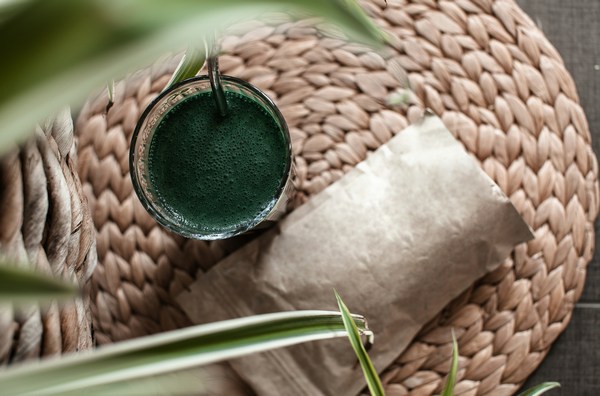Key Takeaways:
- Tallow is a nutrient-rich animal fat with many practical uses.
- It contains valuable vitamins such as A, D, E, and K.
- Tallow is versatile, suitable for cooking, skincare, and household items.
- Grass-fed tallow offers a more beneficial nutrient profile than regular tallow.
- Its stability makes it ideal for high-heat cooking.
What is Tallow?

Tallow is a form of rendered fat, typically made from beef or lamb. It has been used for centuries in both cooking and practical household products.
Unlike other animal fats, tallow is solid at room temperature and highly resistant to spoilage, making it an efficient and long-lasting fat source.
Nutritional Composition of Tallow
High in Saturated and Monounsaturated Fats
Tallow primarily consists of saturated and monounsaturated fats. These fats are stable, making them great for cooking at high temperatures without breaking down into harmful compounds.
Fat-Soluble Vitamins (A, D, E, K)
Tallow is a source of important fat-soluble vitamins that support overall health. These vitamins are needed for immune function, skin health, and bone strength.
Comparison Between Grass-Fed and Grain-Fed Tallow
Grass-fed tallow is more nutrient-dense than grain-fed versions. It contains higher levels of omega-3 fatty acids and conjugated linoleic acid (CLA), which contribute to better health outcomes.
Health Benefits of Tallow

Supports Hormonal Health
The saturated fats in tallow aid in hormone production, which is essential for various bodily functions. These fats provide the building blocks needed for optimal hormonal balance.
Promotes Skin Health
Tallow has a similar composition to the oils naturally produced by human skin. This makes it a highly effective moisturizer, nourishing and protecting the skin without clogging pores.
Aids in Nutrient Absorption
The fats in tallow help absorb fat-soluble vitamins, improving the bioavailability of key nutrients from other foods.
Anti-inflammatory Properties
Tallow contains beneficial fatty acids like CLA, which have anti-inflammatory properties that may help reduce inflammation and promote healing.
Common Uses of Tallow
Cooking and Frying
Tallow’s high smoke point makes it perfect for frying, roasting, and other forms of high-heat cooking. It adds flavor and provides a stable fat source that won’t break down easily during cooking.
Skincare and Natural Remedies
Tallow is frequently used in lotions, soaps, and balms due to its moisturizing and protective qualities. It is suitable for all skin types, including sensitive skin, and can soothe dryness and irritation.
Household Products (Candles, Soaps)
In addition to cooking and skincare, tallow is used to create household items like candles and soaps, which have been crafted using tallow for generations due to its durability and natural qualities.
How to Use Tallow in Cooking

High-Heat Cooking Benefits
Tallow is one of the best fats for high-heat cooking because of its stability. Whether roasting vegetables or frying meats, it adds flavor without breaking down into harmful substances.
Recipes Featuring Tallow
Tallow can be used in a variety of dishes, including roasted meats, fried potatoes, and even as a substitute for butter in certain recipes. Its rich flavor enhances many meals while providing a healthy fat source.
Tallow in Skincare
Moisturizing Properties
Tallow deeply moisturizes the skin without leaving a greasy residue. Its ability to penetrate the skin and mimic natural oils makes it an effective ingredient in lotions, balms, and facial creams.
Commonly Used in Lotions, Balms, and Soaps
Due to its nourishing qualities, tallow is a favored ingredient in natural skincare products. It can soothe dry, cracked skin, and is often used in homemade lotions and soaps.
Sourcing and Storing Tallow
Best Sources for Quality Tallow
Grass-fed tallow is generally considered the best option due to its superior nutrient profile. It can be sourced from local farms, butchers, or specialty health stores.
How to Store Tallow for Longevity
Tallow has a long shelf life and can be stored in a cool, dark place. When kept properly, it can last for several months, making it an excellent addition to any kitchen or skincare routine.
Conclusion
Tallow is a versatile and nutrient-dense fat with a variety of uses that extend beyond cooking. Whether you’re looking for a natural skincare solution or a stable fat for high-heat cooking, tallow offers many benefits that make it a valuable addition to daily life.
FAQs
Is tallow safe for high-heat cooking?
Yes, tallow has a high smoke point, making it one of the safest fats to use for frying and roasting.
Can tallow be used as a moisturizer?
Tallow is an excellent natural moisturizer, providing deep hydration and protection for the skin.
How does tallow compare to other animal fats like lard?
Tallow is more stable at room temperature than lard and contains slightly different fatty acid compositions. Both are good for high-heat cooking.
What’s the difference between grass-fed and grain-fed tallow?
Grass-fed tallow is richer in omega-3 fatty acids and CLA, making it a healthier option than grain-fed tallow.
How long can tallow be stored without going bad?
When stored properly in a cool, dark place, tallow can last for several months to a year without spoiling.
Research
Alshahrani, F., & Aljohani, N. (2013). Vitamin D: Deficiency, Sufficiency and Toxicity. Nutrients, 5(9), 3605-3616. https://doi.org/10.3390/nu5093605
Barendse William (2014) Should animal fats be back on the table? A critical review of the human health effects of animal fat. Animal Production Science 54, 831-855. https://doi.org/10.1071/AN13536
Booth, S. L. (2012). Vitamin K: Food composition and dietary intakes. Food & Nutrition Research, 56. https://doi.org/10.3402/fnr.v56i0.5505
Calder, P. C. Functional Roles of Fatty Acids and Their Effects on Human Health. Journal of Parenteral and Enteral Nutrition, 39, 18S-32S. https://doi.org/10.1177/0148607115595980
Chujo, H., Yamasaki, M., Nou, S., Koyanagi, N., Tachibana, H., & Yamada, K. (2003). Effect of conjugated linoleic acid isomers on growth factor-induced proliferation of human breast cancer cells. Cancer Letters, 202(1), 81-87. https://doi.org/10.1016/S0304-3835(03)00478-6
Cummins, E. J., Colgan, S. F., Grace, P. M., Fry, D. J., McDonnell, K. P., & Ward, S. M. (2002). Human Risks from the Combustion of SRM-Derived Tallow in Ireland. Human and Ecological Risk Assessment: An International Journal, 8(5), 1177–1192. https://doi.org/10.1080/1080-700291905873
Denke, M. (1994). Role of beef and beef tallow, an enriched source of stearic acid, in a cholesterol-lowering diet. The American Journal of Clinical Nutrition, 60(6), 1044S-1049S. https://doi.org/10.1093/ajcn/60.6.1044s
Gilbert, C. (2013). What is vitamin A and why do we need it? Community Eye Health, 26(84), 65.
https://www.ncbi.nlm.nih.gov/pmc/articles/PMC3936685/
Melenotte, C., Brouqui, P., & Botelho-Nevers, E. (2012). Severe Measles, Vitamin A Deficiency, and the Roma Community in Europe. Emerging Infectious Diseases, 18(9), 1537-1539. https://doi.org/10.3201/eid1809.111701
Nagpal, T., Sahu, J. K., Khare, S. K., Bashir, K., & Jan, K. (2021). Trans fatty acids in food: A review on dietary intake, health impact, regulations and alternatives. Journal of Food Science, 86(12), 5159-5174. https://doi.org/10.1111/1750-3841.15977
Nogoy KMC, Sun B, Shin S, Lee Y, Zi Li X, Choi SH, Park S. Fatty Acid Composition of Grain- and Grass-Fed Beef and Their Nutritional Value and Health Implication. Food Sci Anim Resour. 2022 Jan;42(1):18-33. doi: 10.5851/kosfa.2021.e73. Epub 2022 Jan 1. PMID: 35028571; PMCID: PMC8728510.
Panth, N., Abbott, K. A., Dias, C. B., Wynne, K., & Garg, M. L. (2018). Differential effects of medium- and long-chain saturated fatty acids on blood lipid profile: a systematic review and meta-analysis. The American Journal of Clinical Nutrition, 108(4), 675–687. https://doi.org/10.1093/ajcn/nqy167
Rizvi, S., Raza, S. T., Ahmed, F., Ahmad, A., Abbas, S., & Mahdi, F. (2014). The Role of Vitamin E in Human Health and Some Diseases. Sultan Qaboos University Medical Journal, 14(2), e157. https://www.ncbi.nlm.nih.gov/pmc/articles/PMC3997530/
Russell, M.F., Sandhu, M., Vail, M., Haran, C., Batool, U., Leo, J., Russell, M. and Leo, J., 2024. Tallow, Rendered Animal Fat, and Its Biocompatibility With Skin: A Scoping Review. Cureus, 16(5).
Shahidi, F. (2016). Tocopherols and Tocotrienols in Common and Emerging Dietary Sources: Occurrence, Applications, and Health Benefits. International Journal of Molecular Sciences, 17(10). https://doi.org/10.3390/ijms17101745
Shiraishi, R., Iwakiri, R., Fujise, T., Kuroki, T., Kakimoto, T., Takashima, T., Sakata, Y., Tsunada, S., Nakashima, Y., Yanagita, T., & Fujimoto, K. (2010). Conjugated linoleic acid suppresses colon carcinogenesis in azoxymethane-pretreated rats with long-term feeding of diet containing beef tallow. Journal of Gastroenterology, 45(6), 625–635. https://doi.org/10.1007/s00535-010-0206-8
Szpicer, A., Onopiuk, A., Półtorak, A., & Wierzbicka, A. (2019). Influence of tallow replacement by oat β-glucan and canola oil on the fatty acid and volatile compound profiles of low-fat beef burgers. CyTA - Journal of Food, 17(1), 926–936. https://doi.org/10.1080/19476337.2019.1674924
Talbot, G. (2011). Sources of saturated and other dietary fats. Reducing Saturated Fats in Foods, 47-76. https://doi.org/10.1533/9780857092472.1.47
Traber, M. G. (2014). Vitamin E Inadequacy in Humans: Causes and Consequences. Advances in Nutrition, 5(5), 503-514. https://doi.org/10.3945/an.114.006254
Zhang, D., Wang, T., Yang, G., Hu, J., Meng, P., & Liu, W. Composition, thermal, and microstructural characteristics of mutton tallows in comparison with beef tallows. European Journal of Lipid Science and Technology, 2400037. https://doi.org/10.1002/ejlt.202400037
Parkinson’s Disease : Symptoms, Causes & Treatment
Key Takeaways Parkinson’s disease is a progressive neurological disorder that affects movement and coordination. Oxidative stress and excess iron are significant factors in the progression…
Fight, Flight, Freeze, Fawn: Stress Response Examined
Key Takeaways The stress response includes four primary reactions, each serving as a survival mechanism. The fight response involves confronting the threat, often with aggression…
Reduce Stress through Pet Therapy
Key Highlights Pet therapy, or animal-assisted therapy, boosts health. Interacting with animals lowers cortisol, blood pressure, and heart rate. Therapy, service, and companion animals are…
Say Goodbye to Depression with Natural Remedies
Key Takeaways Regular exercise, sufficient sleep, and a diet full of bioavailable nutrients support mental health. Spending time in nature, like forest bathing and gardening,…
Alzheimer’s Disease: Symptoms, Causes, Treatment
Key Takeaways Alzheimer’s disease is a progressive neurodegenerative disorder affecting memory, thinking, and behavior. Oxidative stress, including from excess iron, plays a significant role in…
Mental Benefits of Learning a New Language
Key Takeaways: Enhances brain volume and memory. Improves cognitive flexibility, multitasking, and executive functions. Delays cognitive decline and boosts emotional intelligence. Increases empathy, cultural awareness,…
Anxiety: Causes, Symptoms, and Management
Key Takeaways: Anxiety can disrupt daily life when it becomes overwhelming. Common symptoms include restlessness, rapid heartbeat, and difficulty concentrating. Causes include stress, genetics, and…
Dementia: Causes, Symptoms, and Management
Key Takeaways: Dementia involves a decline in cognitive function affecting memory, thinking, and daily life. Common causes include genetic factors, aging, and certain medical conditions….
Emotional Freedom Technique (EFT): Tap to relieve stress
Key Highlights Learn about the origins and principles of Emotional Freedom Technique (EFT) for stress relief. Understand the science-backed mechanisms of how EFT works on…
Mastering Emotional Healing: Your Guide to Recovery
Key Highlights Emotional healing is a gradual process requiring patience and self-compassion. Acknowledge and accept your feelings, and identify sources of emotional pain. Embrace vulnerability,…
GABA (gamma-aminobutyric acid)
Key Takeaways GABA is a neurotransmitter that helps calm the nervous system. Low GABA levels can lead to anxiety, stress, and sleep problems. Natural precursors…
Supporting Mental Health with Gut Health
Key Takeaways Gut-Brain Connection: Gut health is directly linked to mental wellbeing through the gut-brain axis. Probiotics: Beneficial bacteria that help regulate mood and support…




























